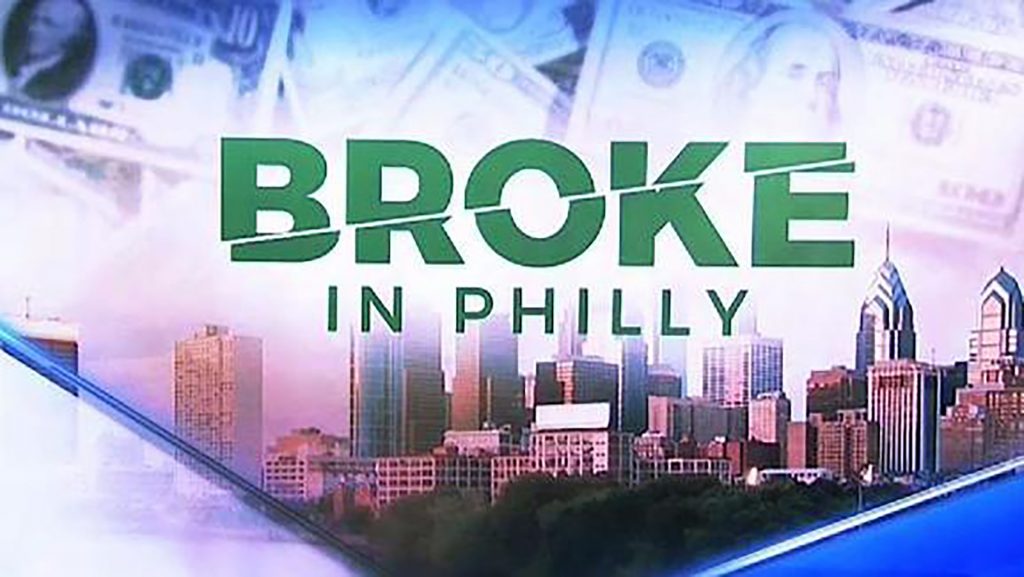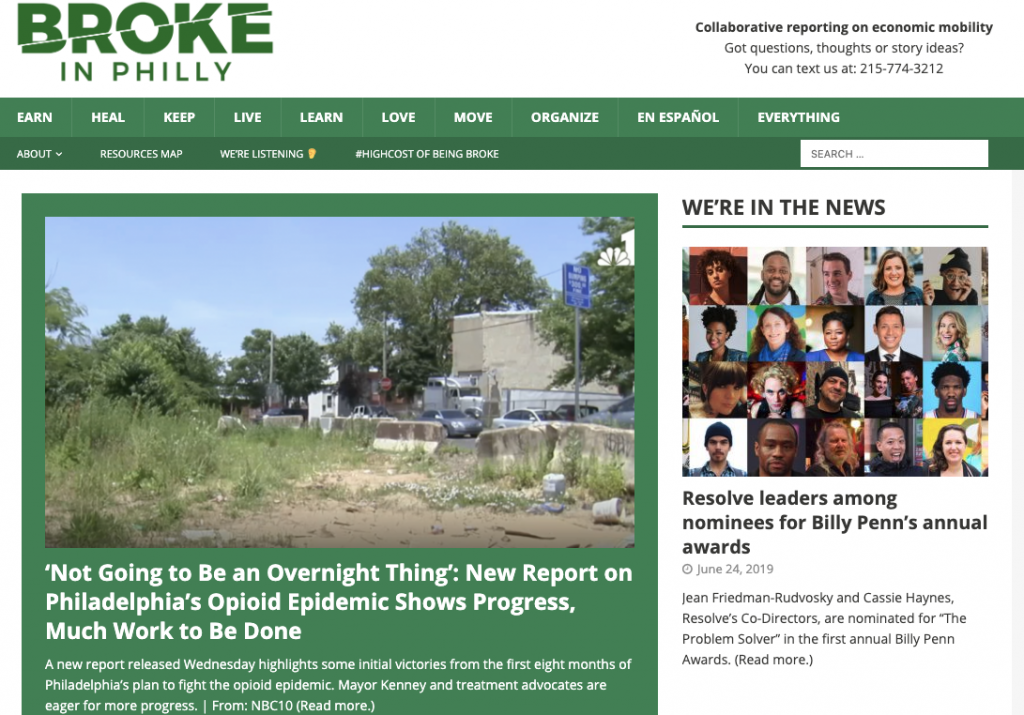
Have you ever met a news director who wasn’t hyper-competitive? If so, I’ll bet he or she didn’t remain a news director for long. Anzio Williams is no exception. “I’ve always seen it as my job to put everybody else out of business,” says the veteran news boss at NBC10 and Telemundo 62 in Philadelphia — not a town for shrinking violets.
But despite Williams’s competitive instincts and initial reluctance, his newsroom is now part of an innovative project called Broke in Philly — more than twenty news organizations collaborating to provide in-depth coverage of poverty and other economic challenges in the city. What’s a big NBC O-and-O doing in a group that’s mostly made up of small community and ethnic news organizations? And focusing on a difficult, complex topic that’s never going to light up the sweeps calendar? The answer is a lesson in finding new ways to serve a fragmenting audience and discovering value in coverage that goes beyond the usual daily fare.
For Anzio Williams, it’s a journey that began with an “arranged marriage.” That’s what he calls Comcast’s acquisition of the Telemundo stations, which put Williams in charge of the newsroom for Telemundo 62 along with NBC10. Williams says he came to appreciate that many of Telemundo’s viewers were watching out of “sheer necessity” and “true need” that gave them — and his corps of Latino journalists — a different perspective on the role of the station. “We always talk about having a diverse staff that mirrors the community that you serve,” he says. “We lacked Hispanics, and now we don’t. It has opened my mind to more collaborations and thinking outside of the box. We cannot continue to do it the same way that we’ve been doing it.”

So even though Williams (and every other TV news director in town) passed on an earlier collaboration focused on prison re-entry, he said yes to Broke in Philly, which launched last year and also targets an underserved population. “I had to take the focus off of me being so competitive and wanting to win win win, and say ‘Okay, how do we provide a better product and a better service that is of value to my audience?’”
The Broke in Philly project is coordinated by a non-profit entity called Resolve Philadelphia, with funders that include The Lenfest Institute and the Knight Foundation (which is our underwriter as well). NBC10 doesn’t draw on any of that philanthropic support, but the station is an active participant and a generous contributor when it comes to sharing resources like graphics or translators. Each partner organization makes its own editorial decisions, but all contribute to the common website, and each is free to publish any story that appears under the Broke in Philly brand. (You can read more about Broke in Philly from NiemanLab’s Christine Schmidt here.)

Before joining Broke in Philly, Anzio Williams “hated the idea of collaboration,” according to Resolve co-executive director Jean Friedman-Rudovsky. Now, Williams has begun doing projects with various partners on stories that have nothing to do with the Broke in Philly project, she says, “because they’ve had a good experience: ‘Oh yeah, this collaboration thing isn’t so bad. And it’s clearly valuable for us.’”
Why does collaboration seem to be taking off now? Friedman-Rudovsky says that in challenging times, more and more newsrooms are willing to experiment. “Everyone has kind of had to throw the rule book out the window,” she says. For local TV, that ‘rule book’ was written for a game with just three or four competitors. Today, news directors like Williams have to navigate a vastly more complicated playing field and lure viewers away from a tempting array of alternatives. “And I believe what we have to do is increase the value of the content that we are presenting,” he says. “We can’t afford today to waste anybody’s time.”
But that doesn’t make collaboration easy. Friedman-Rudovsky has some tips for any station considering initiatives like hers. One is that each project has to have an actively involved champion in the newsroom. In the case of NBC10/Telemundo 62, it’s the director of integrated media, Wendy Warren. Second: don’t focus on an area where the station is already competitive on its own, but find a topic (like poverty) that will benefit from a group effort, where the whole exceeds the sum of the parts. And third, report on solutions, not just problems: it’s easier to collaborate on answers than when you’re trying to expose wrongdoing.
Part of the value of collaboration for Anzio Williams is that Broke in Philly has forced his newsroom to expand its diet beyond the usual mainstays. “I do believe that we can help the communities that we live in be better, and everything is not falling down around us,” he says. “Sometimes I watch the newscast, and I’m like, ‘Hey, listen, everybody’s not going to be shot today, everybody wasn’t involved in a bank robbery or a car accident. So what else? So what else?’ These collaborations give us the ‘what else.’”
But whether or not collaborative projects are the right ‘what else’ for your newsroom, Williams warns that sticking with the status quo isn’t going to work forever. “We can’t play it too safe,” he says. “We have to be thinking about what’s the next thing we have to do? Where’s that next great idea going to come from? We have to continue to reinvent ourselves. As I told a group of journalists, sometimes you can be on the right track and still get run over. And that’s because we’re not moving fast enough.”